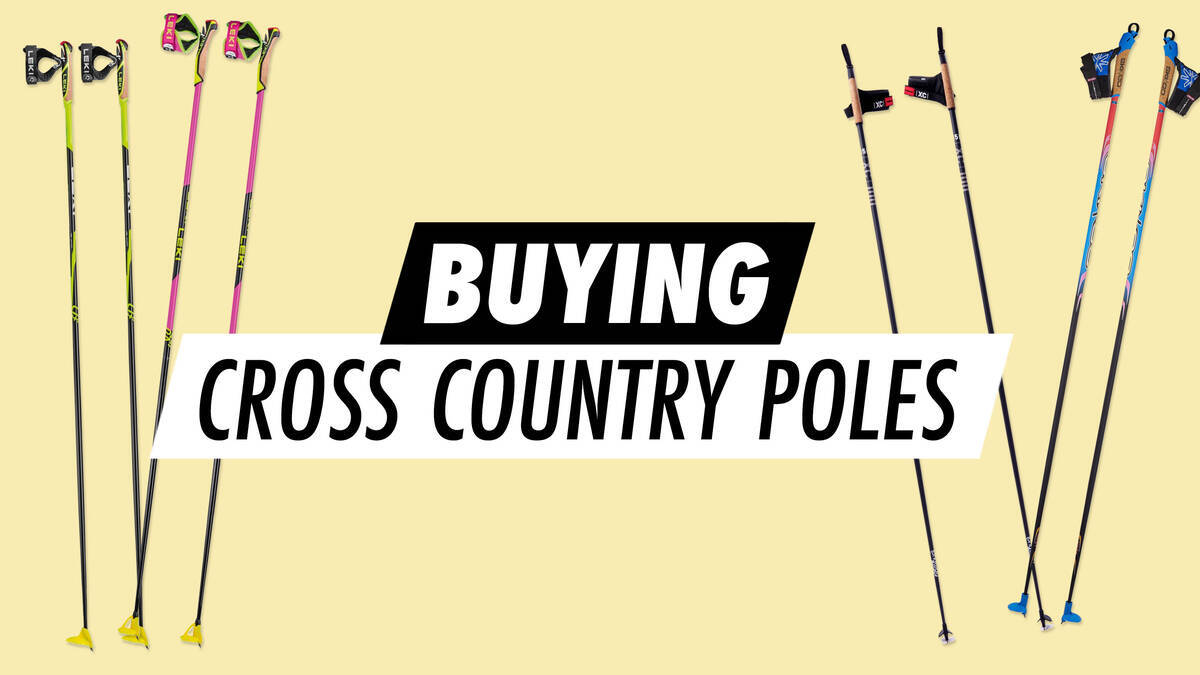Choosing Cross Country Ski Poles: A Comprehensive Guide

In the realm of cross-country skiing, ski poles are crucial. There are distinct poling techniques in both classic and skate skiing, which should be considered when selecting cross country poles. This guide delves into the various aspects of cross country pole length, material, grips, tips, and more.
If you're well-versed with XC poles details, feel free to peruse our complete selection of cross country ski poles. If not, continue to read and familiarize yourself with the key considerations when picking cross country ski poles.
Overview
Overview
Finding the Perfect Size for Cross Country Ski Poles: What Should You Consider?
Selecting the right cross country poles involves matching the pole length with your height and skiing style, considering your preferred skiing approach.
The appropriate sizing of Nordic ski poles is vital as it influences power transmission, comfort, and endurance. Overly long poles may induce shoulder and arm strain, whereas short poles can lead to excessive forward-leaning, hindering power transmission and balance.
Due to diverse poling techniques, the recommended length for skate ski poles varies from that of classic ski poles. Classic skiing requires shorter poles compared to skate skiing, and there's good reasoning behind this.
In classic skiing, techniques like the double poling technique involve positioning the poles in front for effective ground contact. Upholding proper form is crucial. Longer poles can strain shoulders, while shorter ones diminish force application during strides.
Conversely, skate ski poles are longer than classic ones, allowing them to reach the ground when held in a V-shape relative to it. This additional length empowers skate skiers to apply force over a greater range, enhancing momentum.
|
|
|
|---|---|
|
Skiing style |
General reference |
|
Classic ski pole length |
30 cm (or 12”) shorter than skiers’ height |
|
Skate ski pole length |
20 cm (or 8”) shorter than skiers’ height. |
Note: In competitive cross-country skiing, following specific guidelines is crucial. As per FIS (International Ski and Snowboard Federation) rules, pole length should not exceed 83% of your height, measured while wearing cross country boots.
If finding poles matching your height is challenging, don’t fret. Beginners should lean towards shorter poles, while experienced skiers can decide if longer poles suit them based on their skiing style.
Adjustable poles with larger snow baskets are vital for backcountry skiing, and this will be further examined in our section on backcountry ski poles.
Exploring Shaft Materials for Cross Country Ski Poles: Balance in Stiffness and Weight
Ski pole shafts for cross-country skiing are crafted from fiberglass, carbon fibre, or a blend of both. The stiffness of a pole is determined by its carbon content. A pole made entirely from carbon is stiffer than one composed of half carbon and half fiberglass. Aluminum options are also available, particularly for backcountry skiing, due to their suitability for extended wilderness journeys.
Stiffer poles optimize power transmission, ensuring your efforts translate to peak speed on trails. In contrast, softer poles don’t transfer as much power but are kinder on arms during long-distance skiing. Skiers with sensitive elbows may prefer softer poles. For roller skiing, which involves harder surfaces, softer poles are advisable - check out our collection of roller ski poles.
Pole stiffness also influences the pole’s weight – greater stiffness results in lighter poles. A lightweight pole reduces the effort needed to propel your arms forward while skiing.
To summarize: If speed's your priority, opt for stiff and light poles. For leisurely skiing immersed in nature's beauty, a softer pole is adequate.
Cross Country Poles: Grip Materials and Strap Designs
Grips significantly impact performance and comfort in cross-country ski poles, as they affect control and stability. They are often made from materials such as rubber, cork, and foam, each providing unique benefits.
Rubber grips offer a reliable, non-slip grasp suited for all weather conditions. Cork grips excel at heat retention, keeping hands cozy. Foam grips offer a lightweight, cushioned texture, reducing hand fatigue on long trips.
Pole straps also play a key role. Proper strap adjustment is critical for optimal control. Ideal strap length allows you to release the grip while maintaining close control during strides.
Selecting suitable grips and ensuring accurate strap adjustment can amplify your skiing enjoyment and performance.
Need replacement grips or straps for your poles? Explore our cross country ski poles accessories to find what you require.
Find an easy instructional video on ski pole grip replacement below.
Backcountry Cross Country: Adjustable Poles and Larger Snow Baskets
When embarking on backcountry skiing, poles with large baskets are necessity. These are crucial for offering substantial support on loose snow outside marked trails.
Extendable poles are vital when traversing mountainous terrain, allowing independent length adjustments to maintain level arms during side-hilling.
With varying backcountry slopes, adjustable pole lengths accommodate changing conditions. Shortening the poles on ascents promotes better posture, while longer poles on flat or downward sections enhance leverage and stability.
In our cross country ski poles selection, you can filter results by length. Selecting ranges like xx cm - xx cm will show our adjustable pole models.
Switching Tips on Cross Country and Roller Ski Poles
As the pole tips naturally wear over time, replacement becomes necessary. Additionally, adapting cross country poles with harder roller ski tips suited for asphalt allows consistent training with regular poles on roller skis.
Check out the video below for straightforward instructions on replacing pole tips for both cross country and roller ski poles. Measure your pole’s diameter before choosing ski pole tips for cross country or roller skiing.
